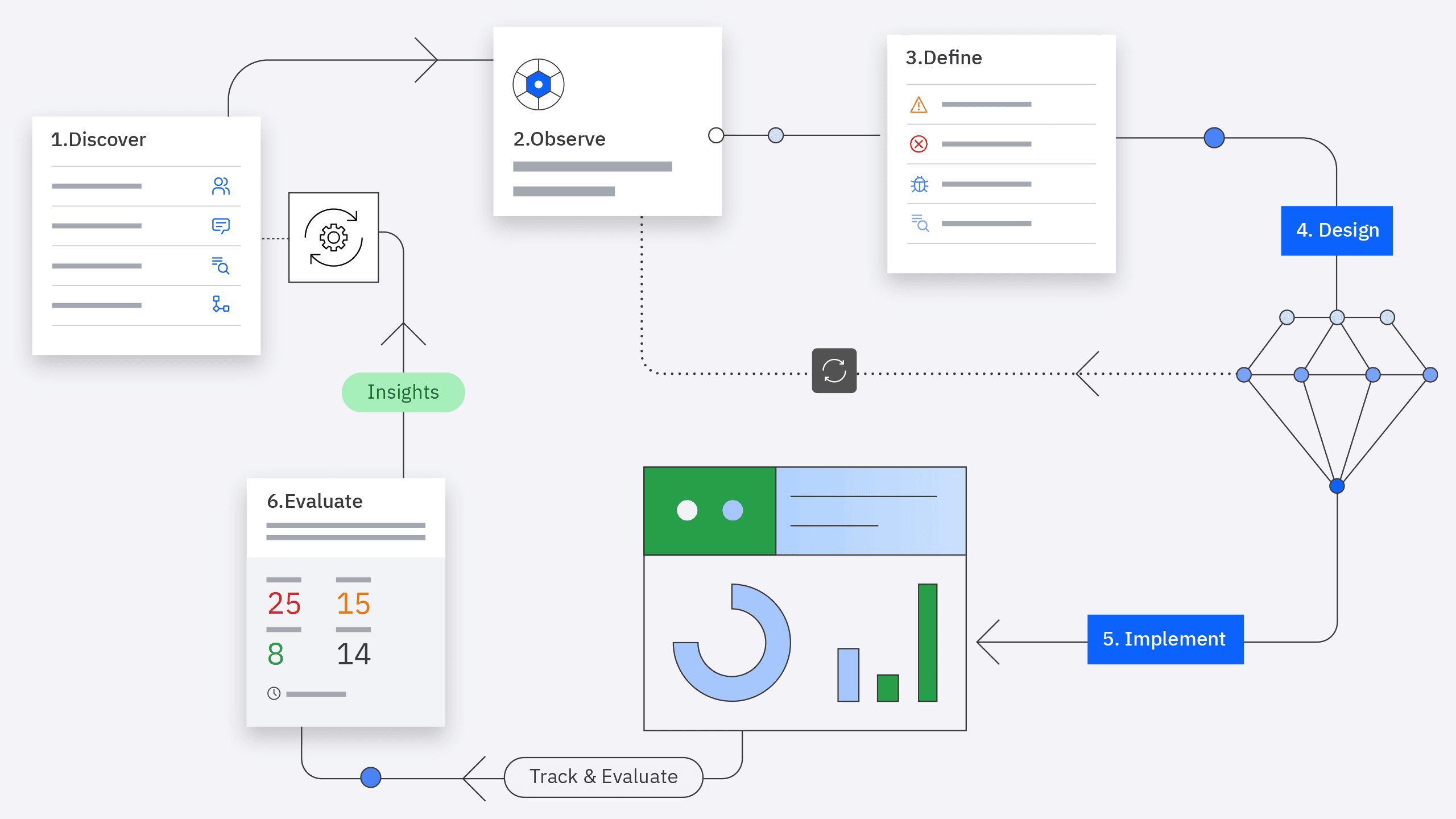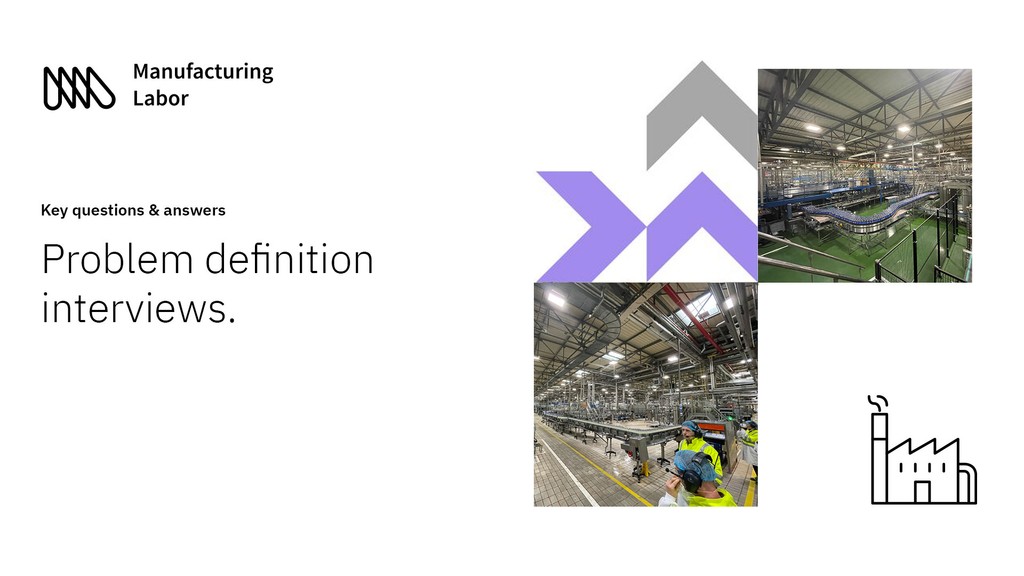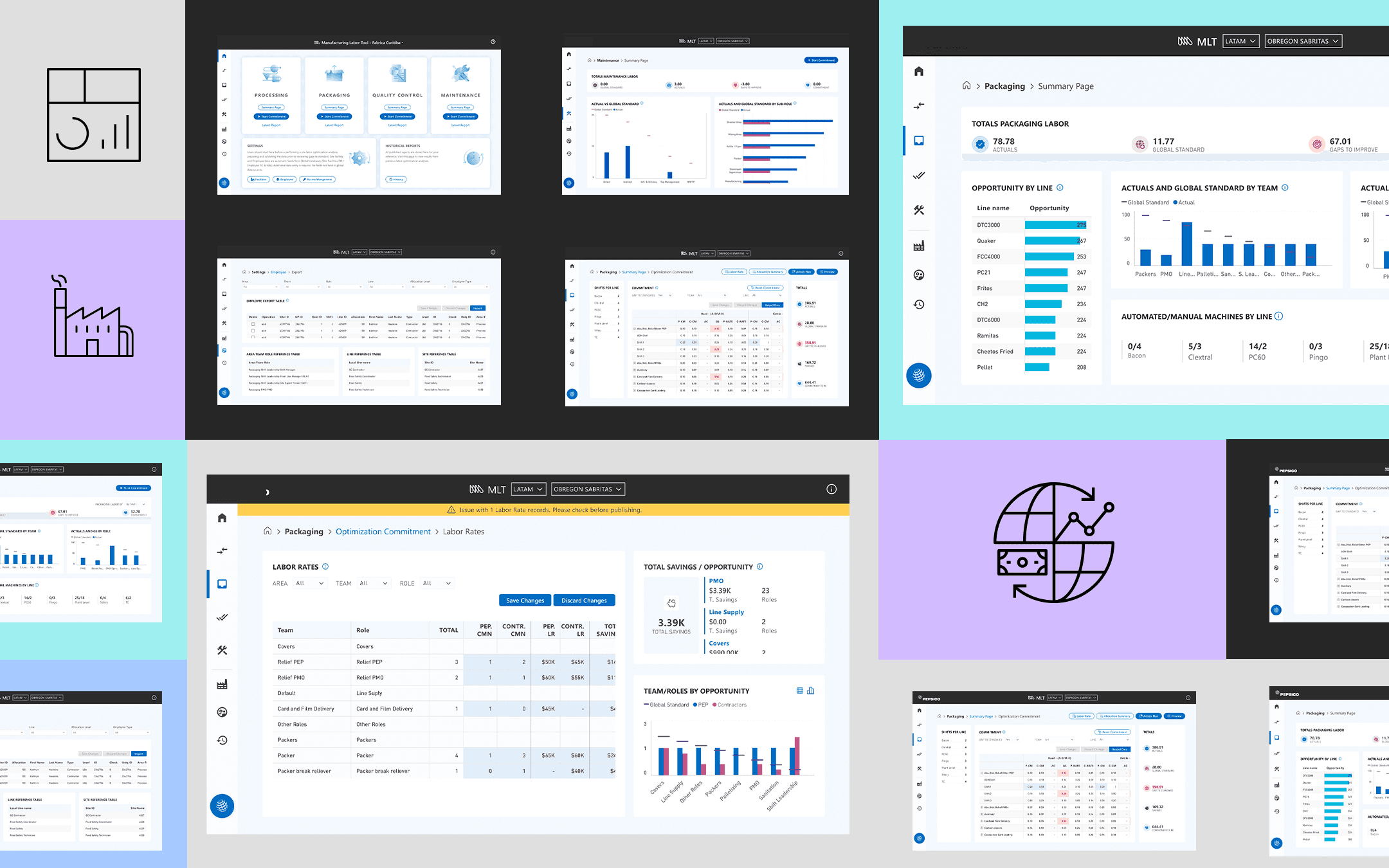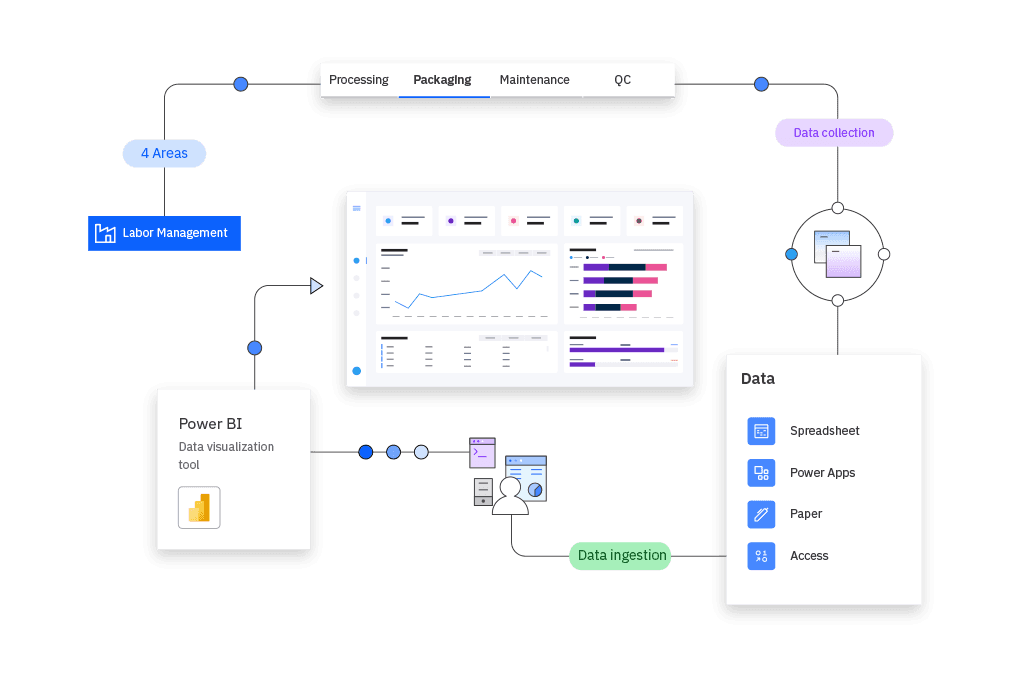Objectives
Objectives
Enhance factory labor decision-making by simplifying data collection across processing, packaging, maintenance, and quality control through data visualization tool.
Enhance factory labor decision-making by simplifying data collection across processing, packaging, maintenance, and quality control through data visualization tool.
My contribution
My contribution
UI Design, technical research, user research, data visualization.
UI Design, technical research, user research, data visualization.
The team
The team
Product owner(1), Power BI devs(3), Data analyst(2), Product designer(me)
Product owner(1), Power BI devs(3), Data analyst(2), Product designer.
Product owner(1), Power BI devs(3), Data analyst(2), Product designer(me)
Tools
Tools
Miro, Figma, Power BI, Spreadsheet, ADO, Sharepoint, Power Apps
Miro, Figma, Power BI, Spreadsheet, ADO, Sharepoint, Power Apps
The framework
Envision the process as a continuous cycle of analysis, questioning, executing, and resolving user needs.
Envision the process as a continuous cycle of analysis, questioning, executing, and resolving user needs.


Research - Discover and observe
As part of the digital transformation process, we carry out the research and user experience process to implement solutions globally.
As part of the digital transformation process, we carry out the research and user experience process to implement solutions globally.
Purpose
Research
Constrains
Conclusion
From complexity towards resolution
Manufacturing Labor was developed to meet the needs for a tool that allows visualization and clear tracking in real time the labor allocation within production lines and the capability to compare those allocations with global standards.
Our research responded to accumulated data from the first users and product meetings.
The challenges
Currently using a variety of manual and ad hoc solutions to plan and schedule labor.
Faster analysis.
Comparison between local/site metrics and global standards to assess opportunity
Reduce labor costs.
Increase production efficiency.
Optimize and automate labor management processes globally.
Labor allocation visibility to identify & close gaps between current state vs. global standards.
More accurate labor planning.
Intelligent planning & forecasting.
Integrated manufacturing operations management for predictive planning & holistic optimization.
Better planning decisions, optimized across all operations areas.
Crew scheduling and management.
Enables dynamic labor planning to right size crew & reduce labor costs.
Purpose
Research
Constrains
Conclusion
From complexity towards resolution
Manufacturing Labor was developed to meet the needs for a tool that allows visualization and clear tracking in real time the labor allocation within production lines and the capability to compare those allocations with global standards.
Our research responded to accumulated data from the first users and product meetings.
The challenges
Currently using a variety of manual and ad hoc solutions to plan and schedule labor.
Faster analysis.
Comparison between local/site metrics and global standards to assess opportunity
Reduce labor costs.
Increase production efficiency.
Optimize and automate labor management processes globally.
Labor allocation visibility to identify & close gaps between current state vs. global standards.
More accurate labor planning.
Intelligent planning & forecasting.
Integrated manufacturing operations management for predictive planning & holistic optimization.
Better planning decisions, optimized across all operations areas.
Crew scheduling and management.
Enables dynamic labor planning to right size crew & reduce labor costs.
Purpose
Research
Constrains
Conclusion
From complexity towards resolution
Manufacturing Labor was developed to meet the needs for a tool that allows visualization and clear tracking in real time the labor allocation within production lines and the capability to compare those allocations with global standards.
Our research responded to accumulated data from the first users and product meetings.
The challenges
Currently using a variety of manual and ad hoc solutions to plan and schedule labor.
Faster analysis.
Comparison between local/site metrics and global standards to assess opportunity
Reduce labor costs.
Increase production efficiency.
Optimize and automate labor management processes globally.
Labor allocation visibility to identify & close gaps between current state vs. global standards.
More accurate labor planning.
Intelligent planning & forecasting.
Integrated manufacturing operations management for predictive planning & holistic optimization.
Better planning decisions, optimized across all operations areas.
Crew scheduling and management.
Enables dynamic labor planning to right size crew & reduce labor costs.
Define
Synthesizing our knowledge to uncover hidden insights that illuminates the path forward. Adding clarity, reframing our point of view and define our thoughts about what's important.
Synthesizing our knowledge to uncover hidden insights that illuminates the path forward. Adding clarity, reframing our point of view and define our thoughts about what's important.
Problem
Data
Architecture
Conclusion
Problem definition
Key questions to identify key needs. As our understanding evolved, we inquired about the intent and motivations of the users to ensure that we were aligned with the real needs.

1 / 7
Problem
Data
Architecture
Conclusion
Problem definition
Key questions to identify key needs. As our understanding evolved, we inquired about the intent and motivations of the users to ensure that we were aligned with the real needs.

1 / 7
Problem
Data
Architecture
Conclusion
Problem definition
Key questions to identify key needs. As our understanding evolved, we inquired about the intent and motivations of the users to ensure that we were aligned with the real needs.

1 / 7
Design
After we've determined the audience and purpose of the application reports, we can identify the most valuable insights that we want to drive.
After we've determined the audience and purpose of the application reports, we can identify the most valuable insights that we want to drive.
Fake data
Fake data
Design scenarios by priority
Priority 1
MVP Implementation.
Visualization shifts by line/area and quick comparison and integration with global data.
Generate dashboards/visuals for each use case.
Integrate different teams into the tool's workflow within the tool.
Priority 2
Accelerate decision-making.
Integrate teh tool into the deep-dive by performing periodic user test sessions with end users.
Agile data loading performance.
Priority 3
Align global and local data structures.
Collaborate with all teams from prpoposal to execution.
Design scenarios by priority
Priority 1
MVP Implementation.
Visualization shifts by line/area and quick comparison and integration with global data.
Generate dashboards/visuals for each use case.
Integrate different teams into the tool's workflow within the tool.
Priority 2
Accelerate decision-making.
Integrate teh tool into the deep-dive by performing periodic user test sessions with end users.
Agile data loading performance.
Priority 3
Align global and local data structures.
Collaborate with all teams from prpoposal to execution.
Design scenarios by priority
Priority 1
MVP Implementation.
Visualization shifts by line/area and quick comparison and integration with global data.
Generate dashboards/visuals for each use case.
Integrate different teams into the tool's workflow within the tool.
Priority 2
Accelerate decision-making.
Integrate teh tool into the deep-dive by performing periodic user test sessions with end users.
Agile data loading performance.
Priority 3
Align global and local data structures.
Collaborate with all teams from prpoposal to execution.



Conclusion
"Ideally I need one digital intuitive tool that will automate ML process, enable collaboration between local site and global team and reduce the effort required to complete ML deep dive."
Predictions based on data analytics traditionally require skilled teams to manage, model and clean data. Generating narratives that make data understandable and interactive makes it a key planning tool. Getting the most out from data goes beyond representing it in a graph; reading data has a lot to do with how users interact, engage and act on the data to generate narratives that anyone can understand at a glance.
Understanding this approach was crucial in delivering user-centric solutions, providing the tools needed to unlock insights and drive decisions.
As a professional conclusion it was very interesting to participate and support user research initiatives in a shared environment with data scientists and data analysts. Complementing my work as a product designer with that of a data visualization designer, led us to rethink the figure within the team of a data visualization designer focused on generating data-driven narratives and being the connector between the data and design teams.
As a result, the tool is being implemented globally and user testing continues to be carried out for future deployments.
Predictions based on data analytics traditionally require skilled teams to manage, model and clean data. Generating narratives that make data understandable and interactive makes it a key planning tool. Getting the most out from data goes beyond representing it in a graph; reading data has a lot to do with how users interact, engage and act on the data to generate narratives that anyone can understand at a glance.
Understanding this approach was crucial in delivering user-centric solutions, providing the tools needed to unlock insights and drive decisions.
As a professional conclusion it was very interesting to participate and support user research initiatives in a shared environment with data scientists and data analysts. Complementing my work as a product designer with that of a data visualization designer, led us to rethink the figure within the team of a data visualization designer focused on generating data-driven narratives and being the connector between the data and design teams.
As a result, the tool is being implemented globally and user testing continues to be carried out for future deployments.
